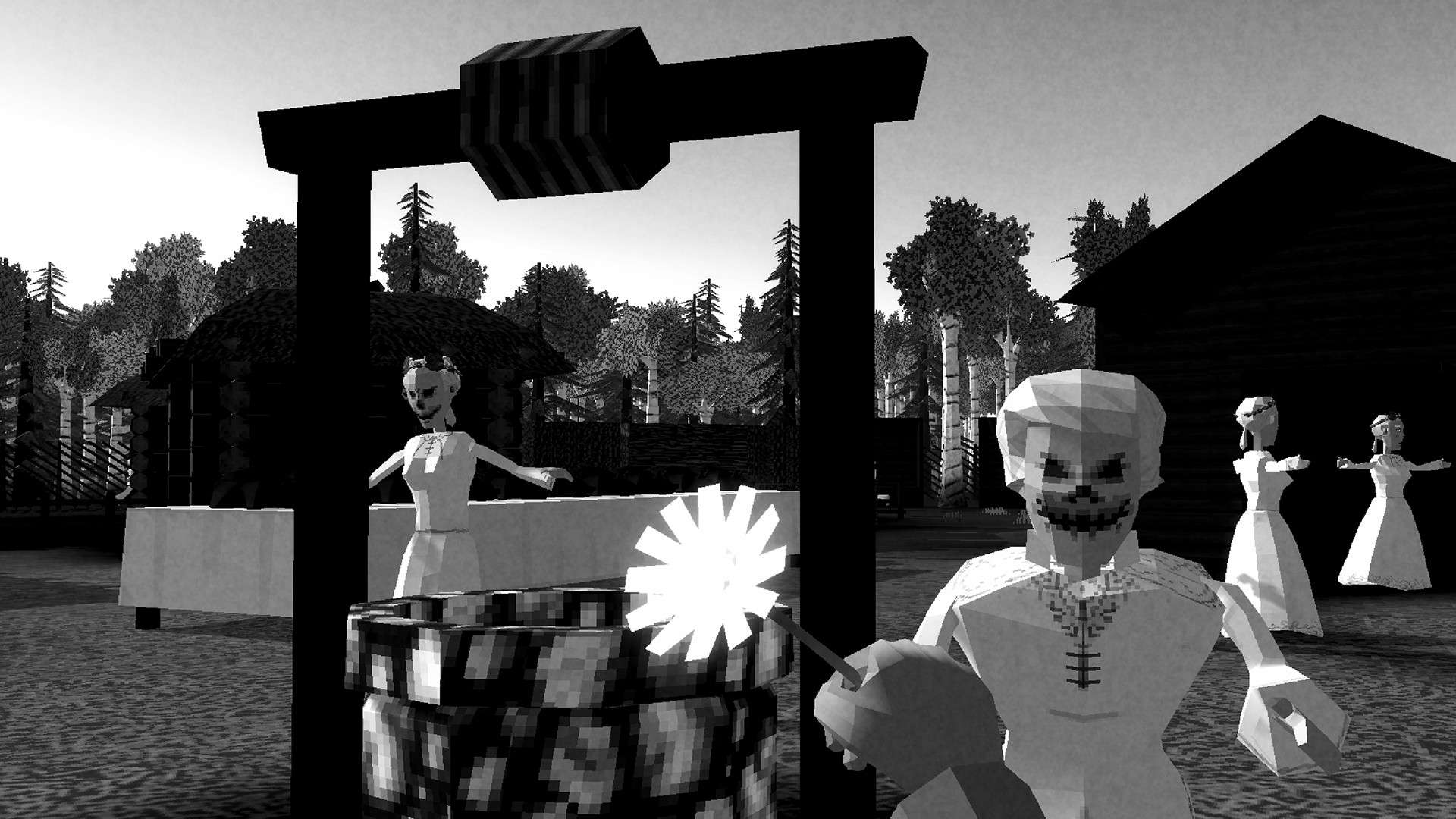
Dread X Collection 5 PC Review
Dread X is a collective that live, breathe, and bleed experimental horror. I know I tell this story frequently, but I feel it’s important to the understanding of my experience with this genre that I avoided for so long and how these radical indie groups have opened my eyes the past year.
In 2013 I paid way too much money for an Oculus Development Kit 1. It was a new and expensive piece of hardware but I just had to try VR, the ‘gaming platform of the future’. Well, since it was such a niche product, there weren’t many real games that took advantage of the technology. Instead, people opted to build small demos and more frequently than not these turned out to be horror titles. Mostly because even a mediocre attempt at scaring players is massively magnified by 360° audio and visuals – there’s no way to escape and it’s easy to lose yourself in the different worlds. Well, after frightening myself half to death a dozen times I turned to getting a good laugh out of scaring my brother and dad (who generally don’t play videogames). I popped them into a labyrinth of roaming monsters, unexpected screamers, and purely cruel enemies that would follow close behind when not being watched. They both, in completely different and isolated sessions, asked the exact same question after not even flinching at the game that had had me genuinely rip the headset from my face in panic. “How do I fight them?”. See, even being dropped completely into the middle of a haunted experience, and in VR no less, they didn’t truly ever place themselves in the position of the character they were controlling. The setting and conditions meant nothing to them. There was no connection to the media, they just knew it was a video game and wanted to ‘win’.

This baffled me. I suppose that digital empathy is actually learned through playing games and investing emotionally in such content, not just a natural extension of ourselves. I finally understood why, even though I loved the idea of and supported horror games, I very rarely actually played them. I allow myself to become way too vulnerable. So much so that a game barely even has to do anything to really have me sweating. Last year, after starting my quest to play as many interesting demos as possible, I decided to rectify that. I was put onto The Haunted PS1 Collections and couldn’t get enough. What I thought going in would just be a bunch of try-hard jump-scares and classic horror tropes was completely wrong. The surreal and wacky retro-feeling games/experiences/art-pieces stunned me. I had never seen such a wide variety of thought-provoking and terrifying projects. I needed more, and the Dread X Collections delivered. With a backlog of three anthologies to go through and a fourth on the horizon, I made my way through them one by one. Not only did they provide more of this wonderfully outlandish expressionism, but they also (mostly) came with launcher games that link all of the separate works together into a meta-narrative, as well as wrapping them all up with a theme. Playing them I realised what I’ve been missing out on all this time; fear is without a doubt the strongest human emotion, and so it is there, in the uncomfortable darkness, that it’s possible to truly look inwards. I know now that it is within that vulnerability that you can really explore the existential.
I realise that writing almost as much as I usually do for a full review simply to provide context is uncouth, but I feel obligated to let any readers know that these genre-bending, bizarre scream-fests have become quite important to me, even if they’re not all created equal. I also realise that this may come off as rather pretentious considering many of the demos within the collections discussed are also incredibly silly. However, I think my point still stands, and several of my new favourites that come from Collection 5 are evidence of that, especially Gallerie. Out of the twelve new ‘visions of terror’, this one stood head and shoulders above rest for me with its insane body-horror, metaphysical depiction of the bonds between one’s self and the art we create, and a fantastically Lovecraftian take on the ‘alien’ theme. Not only by far the most chilling of the bunch with its excellent use of a museum audio tour to whisper into your ear, but it’s also the most innovative and engrossing. In this one pick alone you’ll be attempting to communicate with an impossible creature that has mostly lost their mind, hastily tapping in combos as you race against the rushing pitter-patter of monsters, and be faced with an array of disturbing images that show what ‘putting yourself into your work’ really means.

The most exciting thing is that you never know what you’re going to get. Like a Kinder Surprise of introspective intrepidation, the Dread X titles contain a diverse selection of sub-genres, mechanics, and approaches from the warped minds of its collaborators. In this newest instalment alone there’s one about a text-based adventure game centred around a murderer whose actions in the digital space are replicated around you in real time. There’s another about playing a cursed board game as a malicious spirit roams the house. Solving puzzles and playing games with the spirits of children that died in a kindergarten fire? It has that. And an FPS that follows the harrowing story of revenge for a woman that was kidnapped and abused by the owners of a karaoke bar. A Silent Hill-esque action title, a psychedelic black-and-white walking-sim trip through a restored nightclub that had previously shut down due to a number of deaths, plus a twisted look at the famous Swedish tradition of the Midsummer celebrations, to name a few more.
However, this is also where it gets tricky because, as art often is, it’s totally subjective. I know I’ve not clicked with some of the titles that seem to be of the most popular, and I’m sure many would disagree with my personal favourites. For example, I came to seriously dislike the widely loved Squirrel Stapler, after being forced to wander around a huge open space for an hour doing nothing but praying to find the last little critter to blast. And in this new release, I managed to power through The Book of Blood with very little trouble after realising I can just avoid any threats with a simple Quick-Time Event, sapping it of its power to scare me. Outside of the obvious fun of certain gameplay mechanics, the narratives, styles, and abstract nature of them make recommendation challenging. But what I can assure you is that everyone is guaranteed to connect with something here. That alone is a major win – to know you’re going to find something that speaks to you in each assembly of games is an exciting prospect that has me constantly waiting on the next part.

Sadly, I don’t think Collection 5 is the best so far. The launcher game is my least favourite of the bunch by far due to the lack of interesting puzzles and with it being seemingly disconnected from the rest of the Dread X Universe (even considering how crazy the others are). I also missed the inclusion of a wild-card game that just goes completely off of the rails like Sucker for Love, EDEN: Garden of the Faultless, and Mr. Bucket Told Me To do. As with all the collections, the individual games themselves are a mixed bag of experiences that are going to have peaks and valleys for each player. The best one can hope for is to enjoy as many as possible. I already mentioned Gallerie as being the clear victor for me in that regard, but I also adored the brutality of Karao and its tormenting song. HUNSVOTTI was both perfectly creepy then, suddenly, eerily empowering. We Never Left did a great job of playing with the player’s expectations and somehow managing to surprise even though it was obvious what was coming. None of the collections have skewed negatively for me yet, and although a couple of them I didn’t particularly register with, that continues to be true. I’d say these remarkable bundles are must-plays as long as you understand that balance and don’t get turned off by the odd dud.
